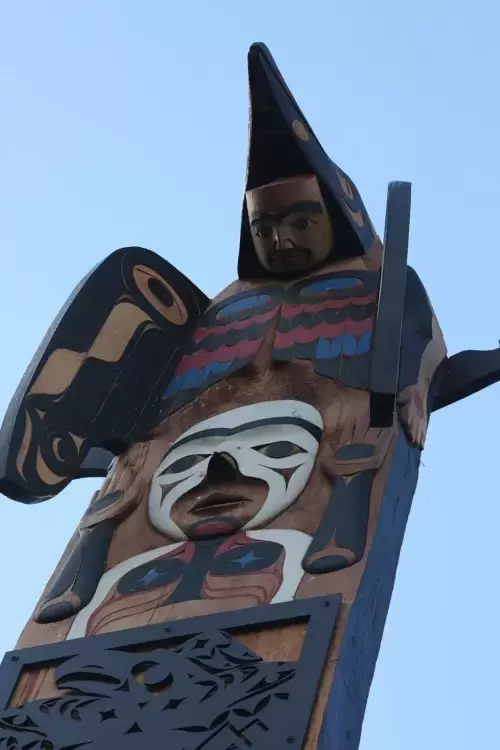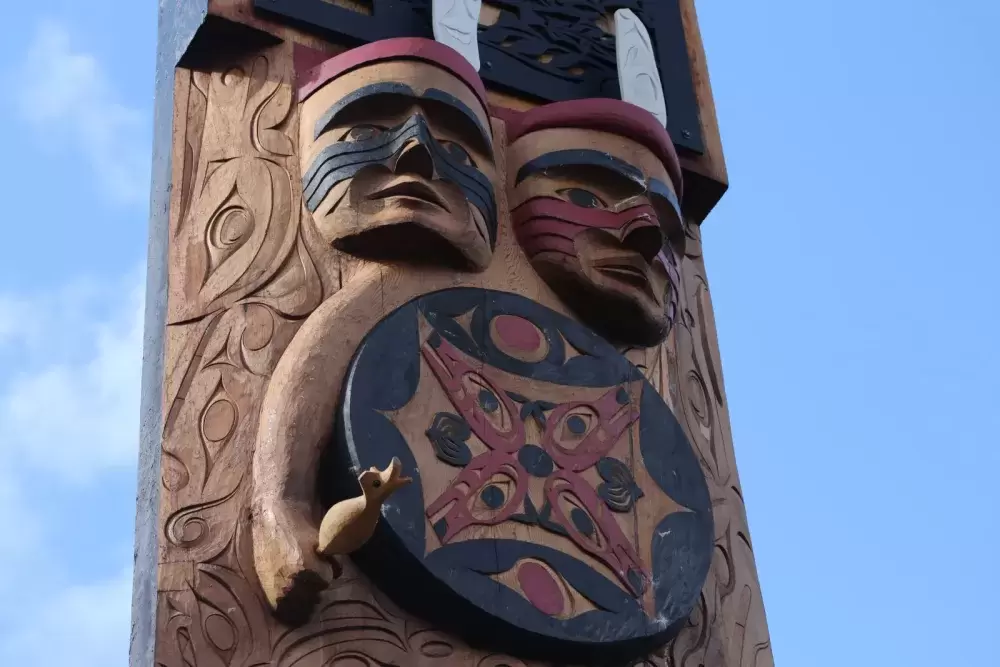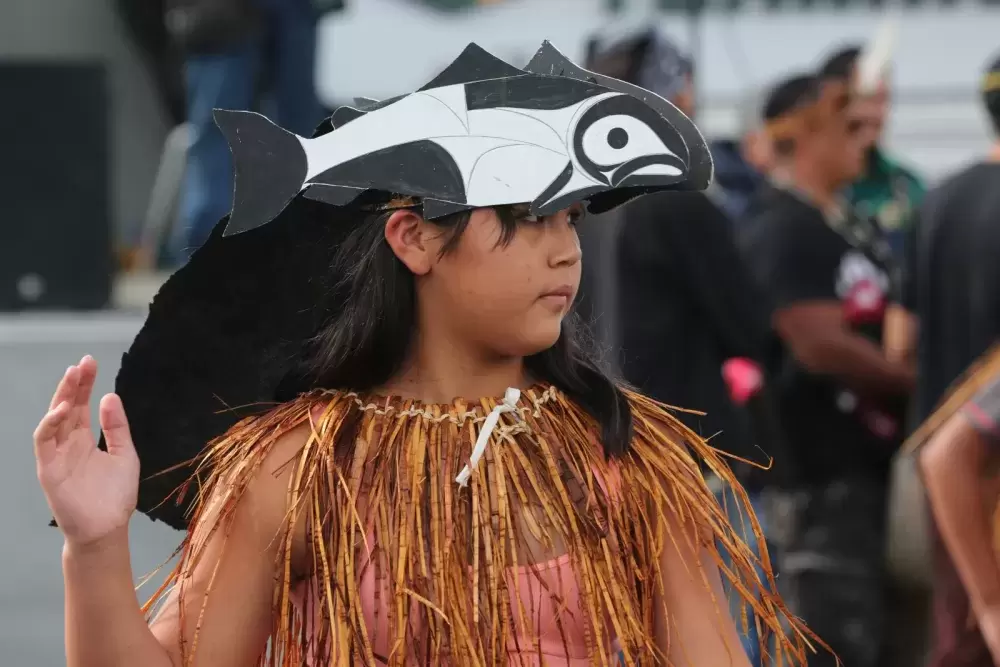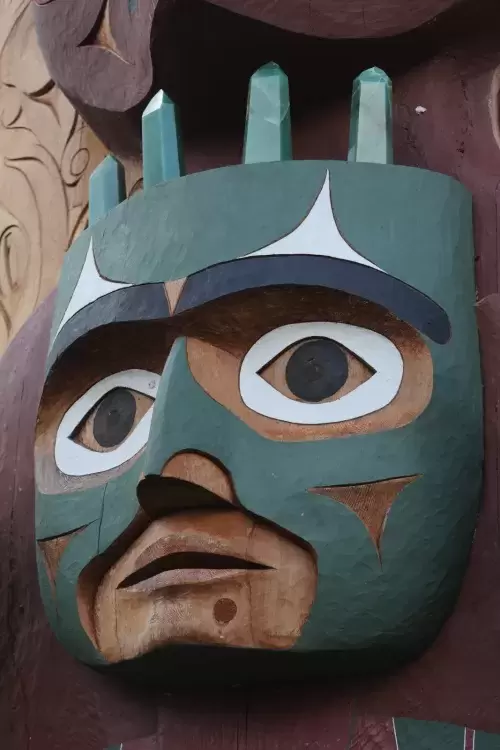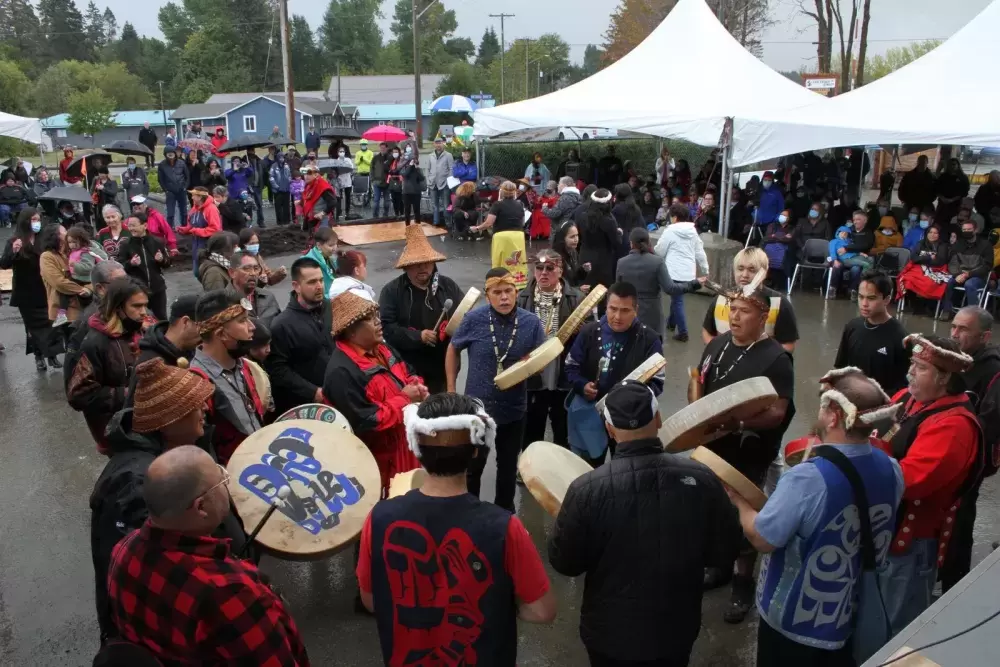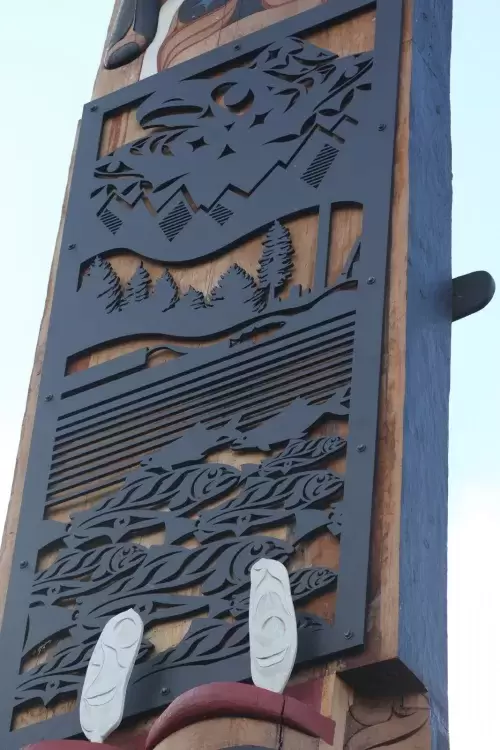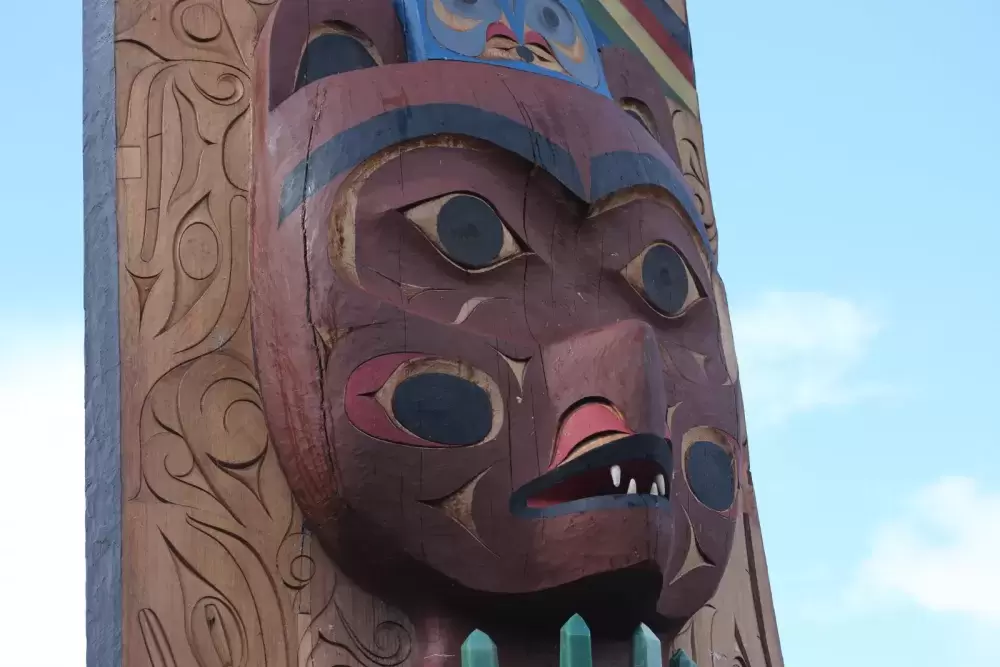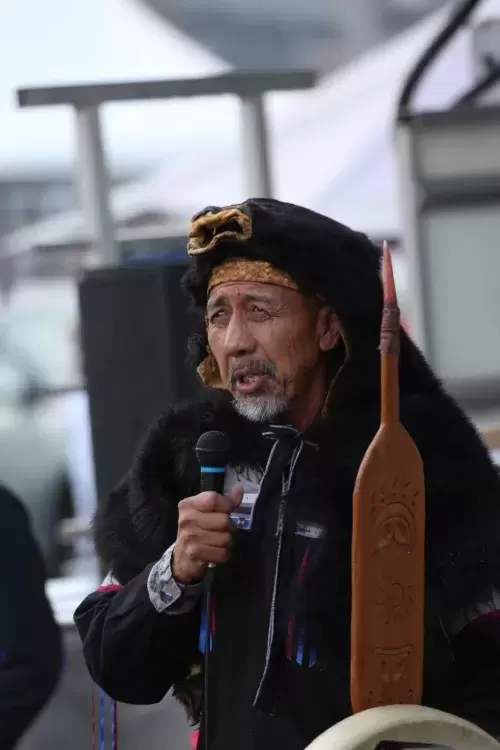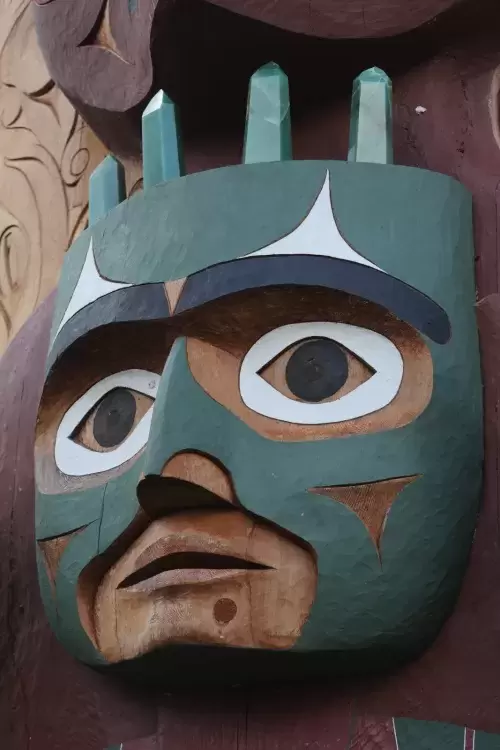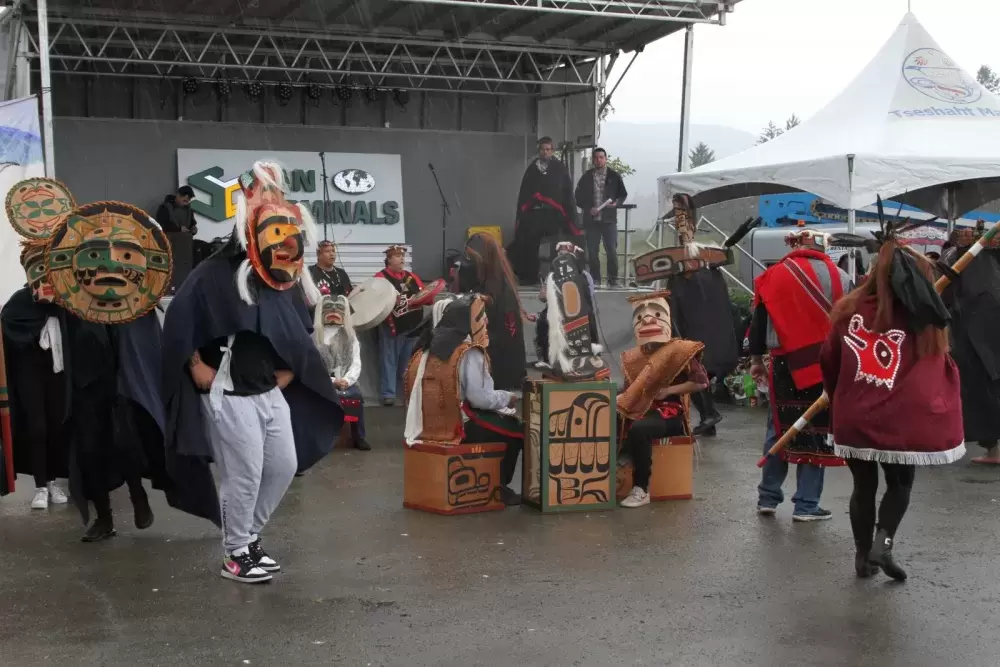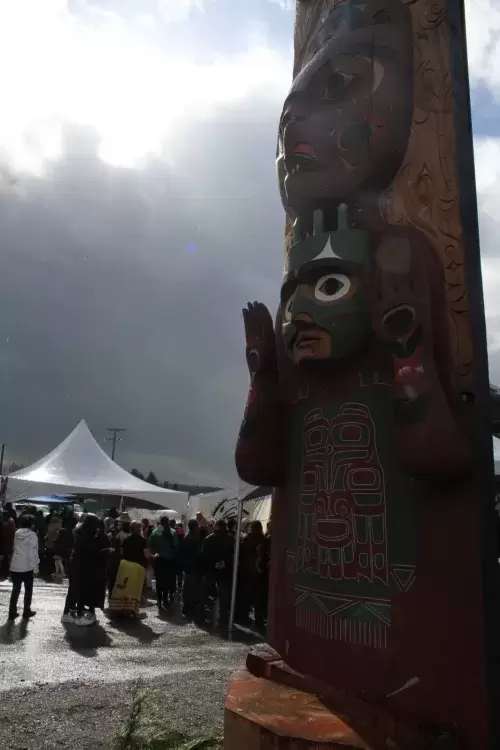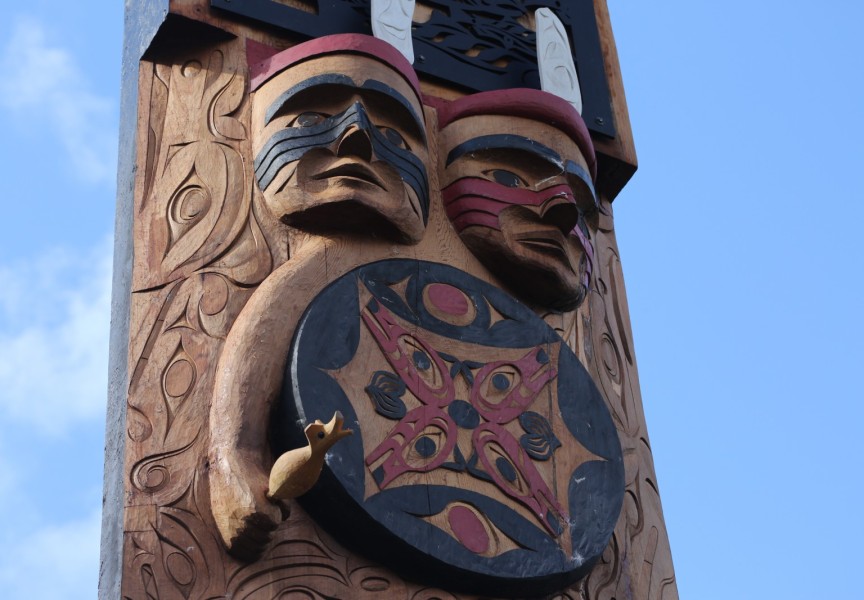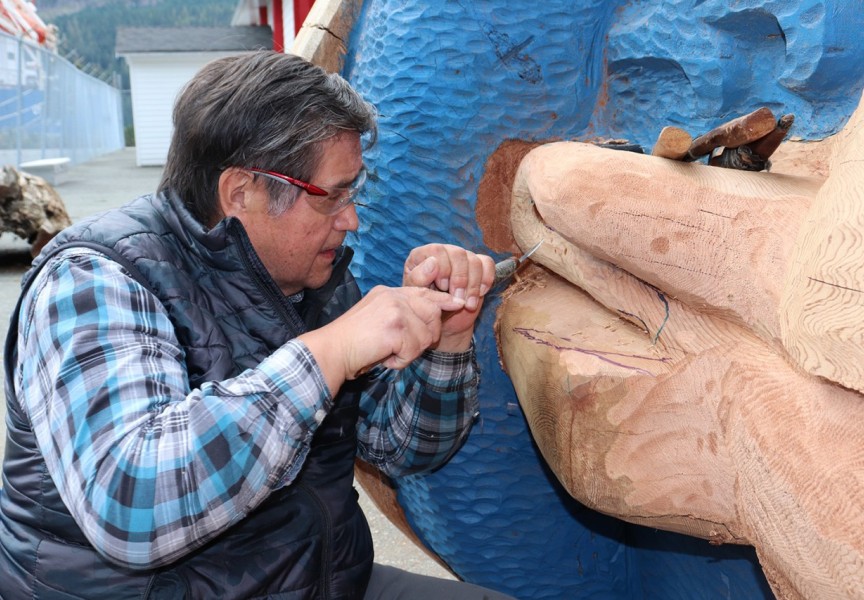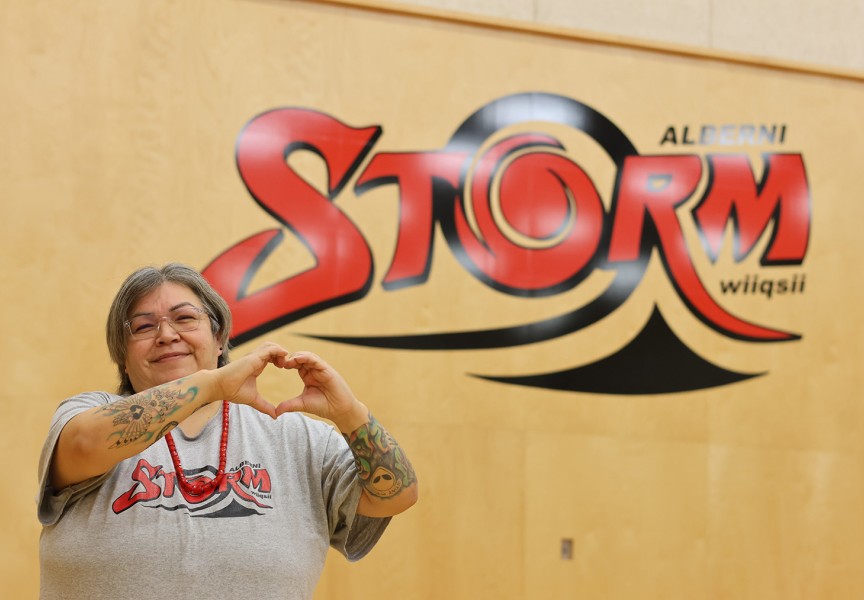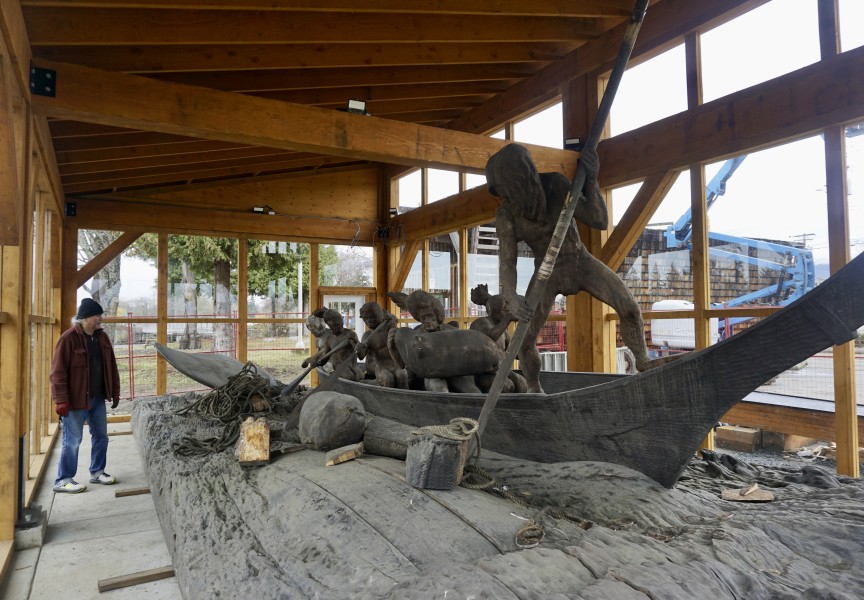A newly raised totem pole at Port Alberni’s waterfront is a mother for all of the lost children who never returned home from residential school, according to the carver behind the multi-year project.
During the unveiling of n̓aasn̓aasʔaqsa (pronounced ‘naas naas uksah’), Tim Paul tied the creation to news that disturbed people across Canada this year. With hundreds standing under the 37-foot structure by the Victoria Quay, the carver referenced the discovery of unmarked graves at several former residential school sites over the past summer.
“In the past few months we’ve been starting to hear about the discoveries of lost children,” said Linus Lucas, speaking on behalf of Paul, his fellow Hesquiaht member. “He wants this figure to represent a mother for all those lost children so that they have a home to come to. This figure will be recognized as our mother, and will be here for eternity. For all of our lost children that are going to be discovered, they will have a place to come home and be in the arms of their mother.”
A crane untied the shroud to reveal the master carver’s latest piece on Sept. 18, two days after the pole was transported to the edge of the San Group’s property on the former site of Noopsikupis, a historical Tseshaht village by the Somass River. The occasion was attended by locals and people from throughout Nuu-chah-nulth territory, as well as Paul’s Kwakiutl and Tsilhqot’in relations, who performed for the crowd.
Vibrantly painted and intricately detailed, the towering piece depicts the 11 relatives of nature, with figures showing the sky chief, the moon, the sun, the sea chief, the first man and woman, with Naani, or grizzly bear, at the bottom.
Paul explained the importance of a figure in the piece who represents an earthquake.
“Earthquake reminds us all, as a people and families and the whole world, of our place in this universe,” he said. “Earthquake will demonstrate and show us, remind us how small we really are when that big one comes.”
n̓aasn̓aasʔaqsa also contains an aluminum plate, illustrating mountains, forest, a river and the salmon within. Along with other elements of the pole, the significance of this feature was explained to the crowd in Nuu-chah-nulth, then English, during the unveiling event, with reference to deforestation, overfishing that left none for the Nuu-chah-nulth and how open pit mines spoiled rivers and lakes.
“It’s a conversation piece - not only for our neighbours but for you and I - that we have to begin changing,” explained Paul. “We make change for the betterment of our children. We quit overtaking. Naas is here to give us anything we want, but once we begin overtaking and continue to overtake, we pay dearly. And we’re beginning to pay now.”
The project began as a windfallen cedar found on the forest floor of Huu-ay-aht territory. Transported to Port Alberni’s waterfront in March 2019, Paul and his team of carvers began working on the 800-year-old log near the Harbour Quay at the south end of town. It was commissioned by the First Nations Education Foundation to promote the advancement of Aboriginal languages, and originally planned to be erected at the University of Victoria by the end of 2019 to mark the United Nations Year of Indigenous Languages.
But funding became thin, and by the summer of that year carvers were working on a volunteer basis. Then in the fall of 2019 Paul had to step away from the project after the passing of his long-time wife. But the Hesquiaht carver returned to the piece in 2020 with a team of Nuu-chah-nulth craftsmen, and by the summer of 2021 the First Nations Education Foundation had secured a $75,000 grant from the Canada Council for the Arts, all of which went to the carvers.
With a permanent home now in Port Alberni, the piece will retain its patronage under the Canadian Commission for UNESCO, according to the education foundation’s executive director Scott Jeary.
Initial plans have changed, including a complete reworking of the pole this year to realign figures after Paul returned to the project. But as the structure towers over Port Alberni’s busiest area, the inspiration behind the piece cannot be forgotten, said Paul.
“What this means for all of us as a family - as dads, grandfathers, uncles - that we know the women of the past and even right up to where we are today [are] the backbone of all of us as men,” he said.
“This is the first time in my life I’ve ever seen anything like this,” said Ciisma, a fluent Ahousaht speaker, during the unveiling event. “I’m 73 years old. I’ve never seen a pole being raised; I’ve seen them taken down and brought to museums. This is so heartwarming.”

